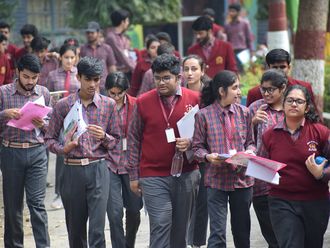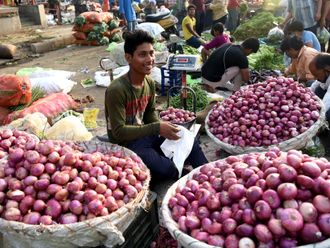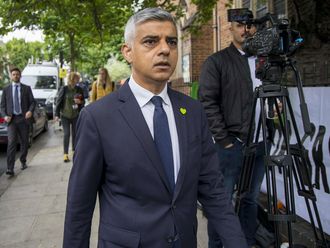
Madhoun: India's government is spending billions of dollars on welfare schemes, and plans even more this year. But that is news to Poona, whose daughter may soon die from that stain on India's growth story — malnutrition.
Poona, who married at 14 and breaks quarry stones for a living, shielded her daughter's sunken face from a harsh summer sun with her blue sari. She does not know Urmila's weight, but the whimpering 18-month child looked more like a newborn baby.
"She eats nothing," said Poona, a lower caste woman from a northern Indian tribal community in Uttar Pradesh state. "I feel scared of losing my child."
Since helping the Congress party win re-election last year, welfare has fast become the government's knee-jerk answer to policy dilemmas as it tries to ease food inflation, help growth trickle down to the poor, and win hearts and minds in a Maoist insurgency, many experts say.
But these often corruption-ridden and badly run programmes may add to deficit spending and hinder India from following rival China by broadening an economic boom to transform millions of its population from poverty to well-fed middle class consumers.
In Madhoun village, a mobile phone tower stood near. But, while symbols of modernity seep in, welfare lags. Villagers complain no officials come here, and that upper castes siphon off pre-school porridge meals to fatten their buffalo.
Sonia Gandhi, Congress party head, has drafted a food bill to give each poor family 35 kilogrammes of grains a month, as the government provisionally upped its estimate of the poverty rate from 27.5 per cent to 37.2 per cent of the 1.2 billion plus population.
It also comes after Congress introduced a "revolutionary" programme to ensure 100 days of jobs for villagers each year.
But these schemes' foundation stones may be built on sand, many experts say, threatening India's ability to narrow a yawning income gap that may endanger its economic success story despite Congress promises of "inclusive growth" since its 2004 election.
Growth not spread
Welfare programmes can help millions in a country that has a third of the world's poor. Some schemes work well in states like Tamil Nadu which has a tradition of better governance.
But ridden by graft and often ill-conceived, welfare may have become an easy populist tool that is a second best solution to government reluctance to embrace difficult policies, like freeing up agriculture to markets — that may make deeper inroads.
Sonia Gandhi's assassinated husband, former Prime Minister Rajiv Gandhi, said that out of every rupee spent on welfare, only 15 per cent reached recipients.
"There are areas where these schemes certainly work," said political analyst Mahesh Rangarajan. "They are blunt instruments. It is easier to hand out a kilo of rice than reform agriculture."












